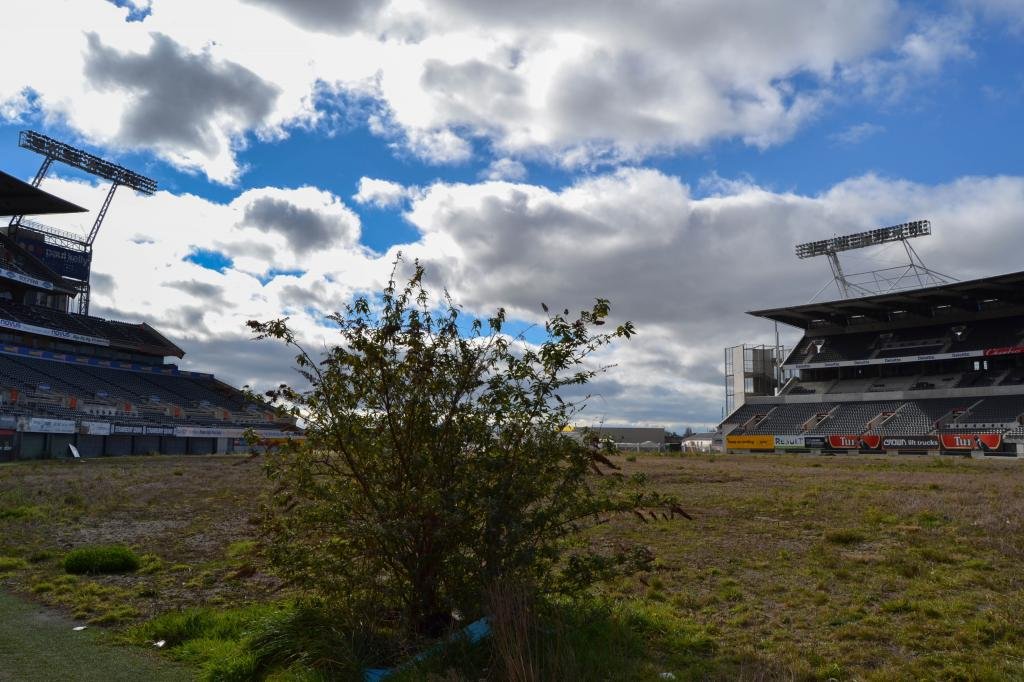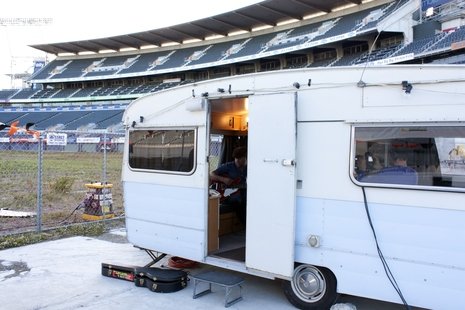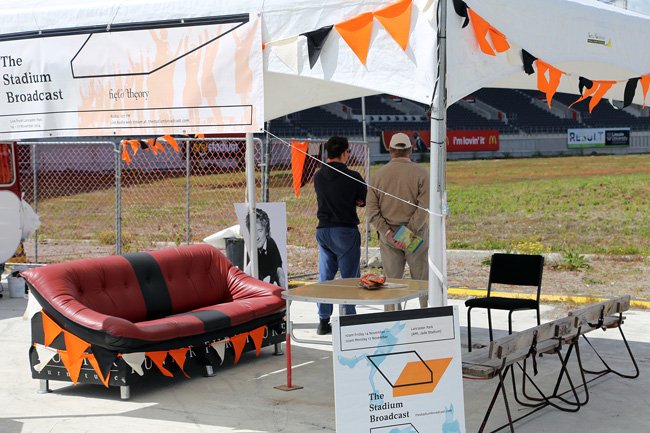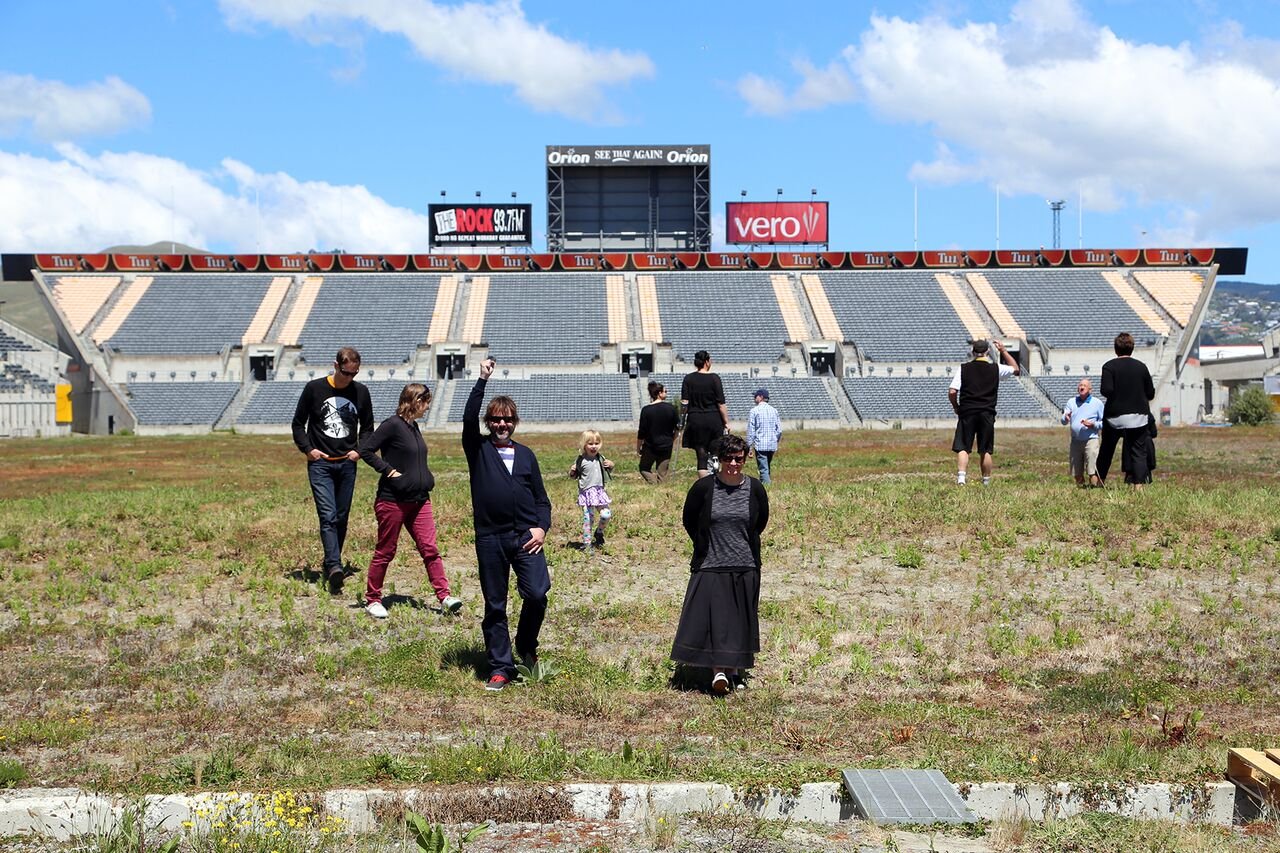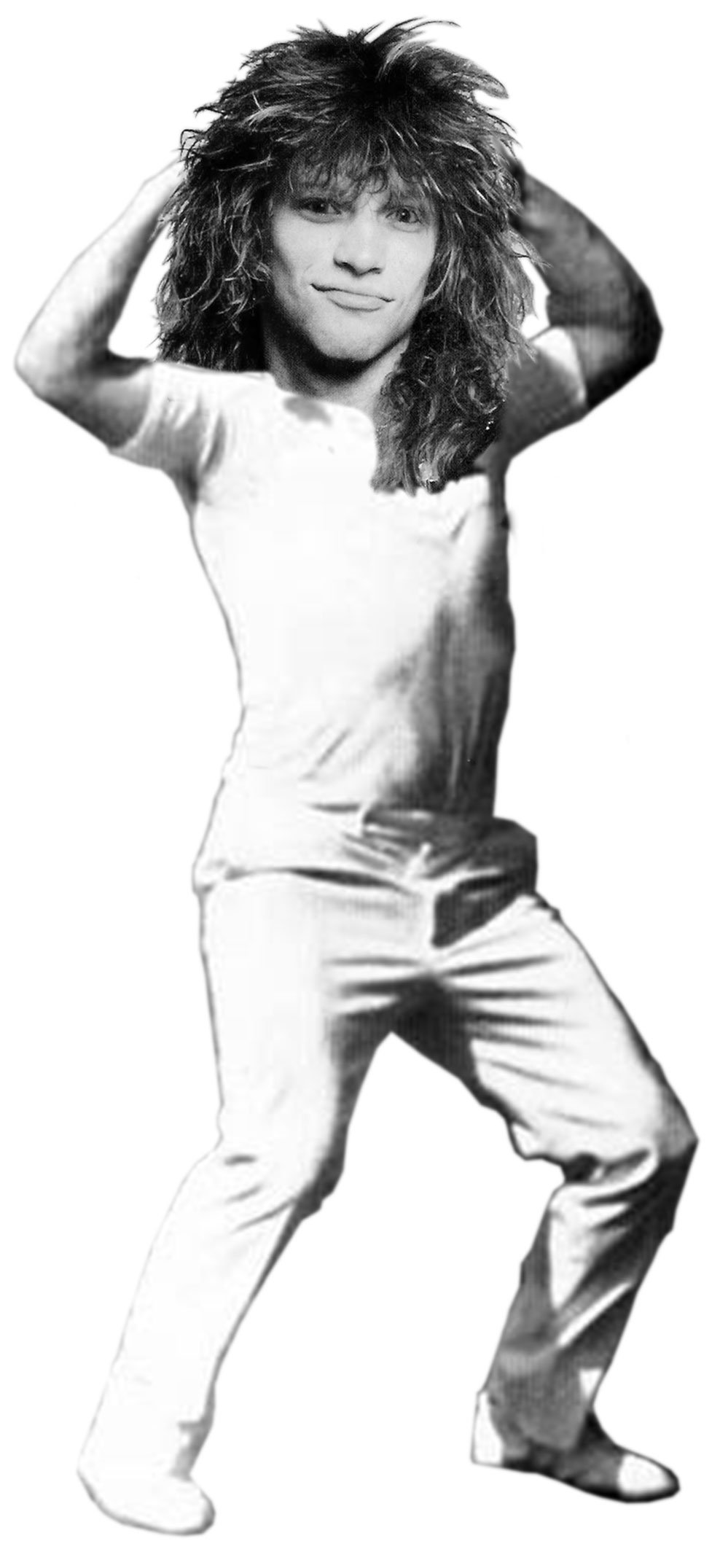
Lancaster Park stadium in Christchurch, NZ had not been open to the public since the February 2011 earthquakes. The Stadium Broadcast offered Cantabrian’s a chance to once again walk on hallowed turf and deliver whatever they needed to, perhaps a eulogy, a haka, a denunciation or even a version of Tina Turner’s Private Dancer. These small gestures were broadcast to the world for 72 hours non-stop as a tribute to everything that had ever happened on this hallowed field.
Jason Maling, Lara Thoms, Martyn Coutts, Jackson Castiglione and Sarah Rodigari lived in the stadium for 72 hours, broadcasting live as part of this durational performance. We entered the research phase blind – knowing very little about sport or local history - and came out with thousands of anecdotes, interviews and stories, acknowledging the grief that comes with the closure of a 130 year old site. We found gossip from the VIP stands, fiascos with sponsorship, stories of 21st birthday parties and Bon Jovi gigs.
Our content ranged from the Springbok tour protests, to earthquakes, to streaking, nothing was too big or small to talk about.
This project invited Christchurch to pay homage to the ground as it sat in a state of uncertainty between abandonment and demolition. We were interested in finding the narratives that bound people to this unique place as well as providing a platform that asked how those stories might shape the future of the site.
The archive of the entire broadcast was acquired by the Nga Taonga New Zealand sound Archive.
Listen to a radio NZ interview with Jason Maling and Martyn Coutts.
“Field Theory staged a -day participatory performance, occupying Christchurch’s AMI stadium. It was another highly original example of artists using sport to create space in which specific communities can share memories, stories and in this case, grief not just of the ground as a functional venue but of their city before the earthquakes”
Felicity Fenner, Running The City, Why Public Art Matters, Published 2017
“The Stadium Broadcast was a project built from memory, in which the abandoned stadium was created, fleetingly, by people standing in that space and re-constructing it in words. In the memories shared on air, moments of great personal and national significance were recounted over the wreckage of the ground, the abandoned stands, and their uncertain future. Many visitors and radio guests expressed gratitude at being given the chance to revisit the space and their own memories. ...With a tight focus on the current state of the ground and its stands, the broadcasters opened it up to a broader potential public than those who were able to physically visit it. Listening to the broadcast meant hearing the space of the ground, the undulations of the field, and the wild plants, bees and birds, and multiple histories of past life in the space overlaid on the surroundings of the listener. The past and present of the stadium were recreated in two places at once: in a caravan within the stadium, and in the place where people listened. This was a radio memorial, not just to the physical structures around major sporting encounters, but to the pre-quake city, and its many physical, social, and economic transformations since 1888.
Dr Zita Joyce, University of Canterbury, Journal of Space and Culture



